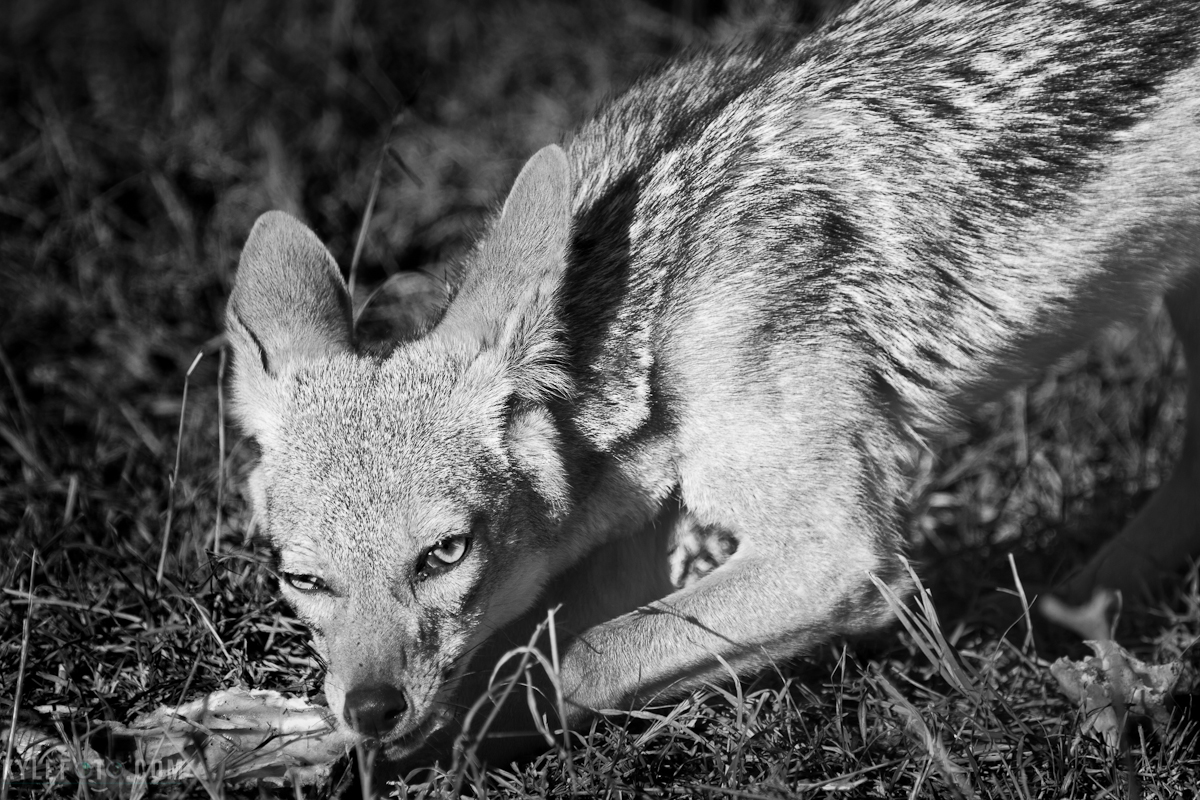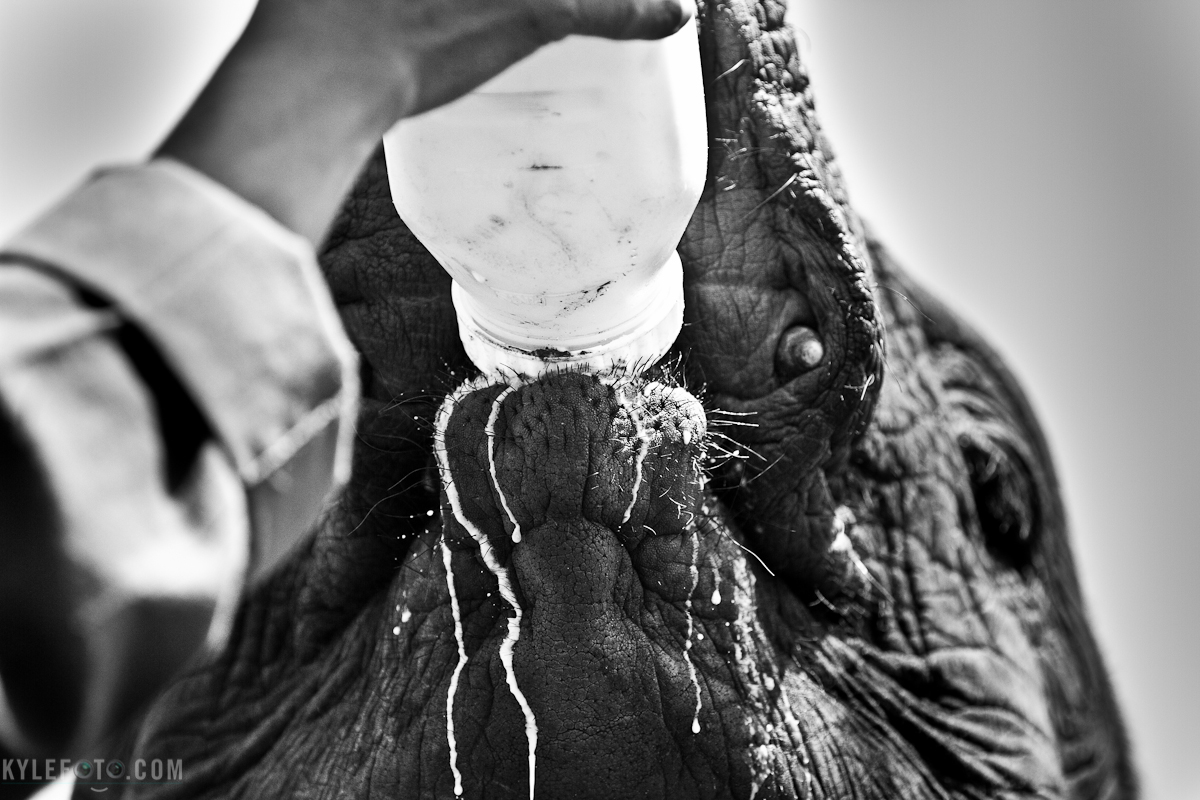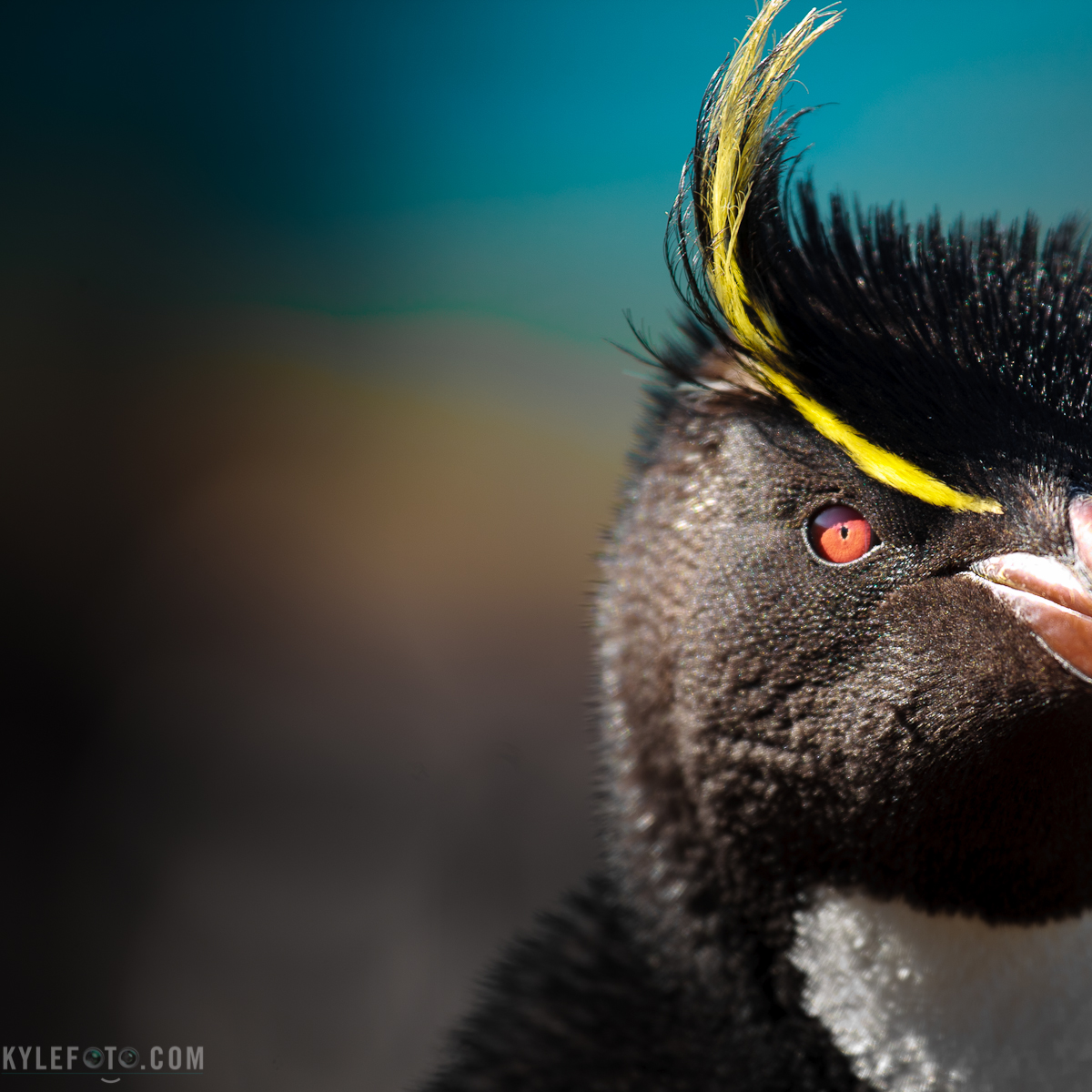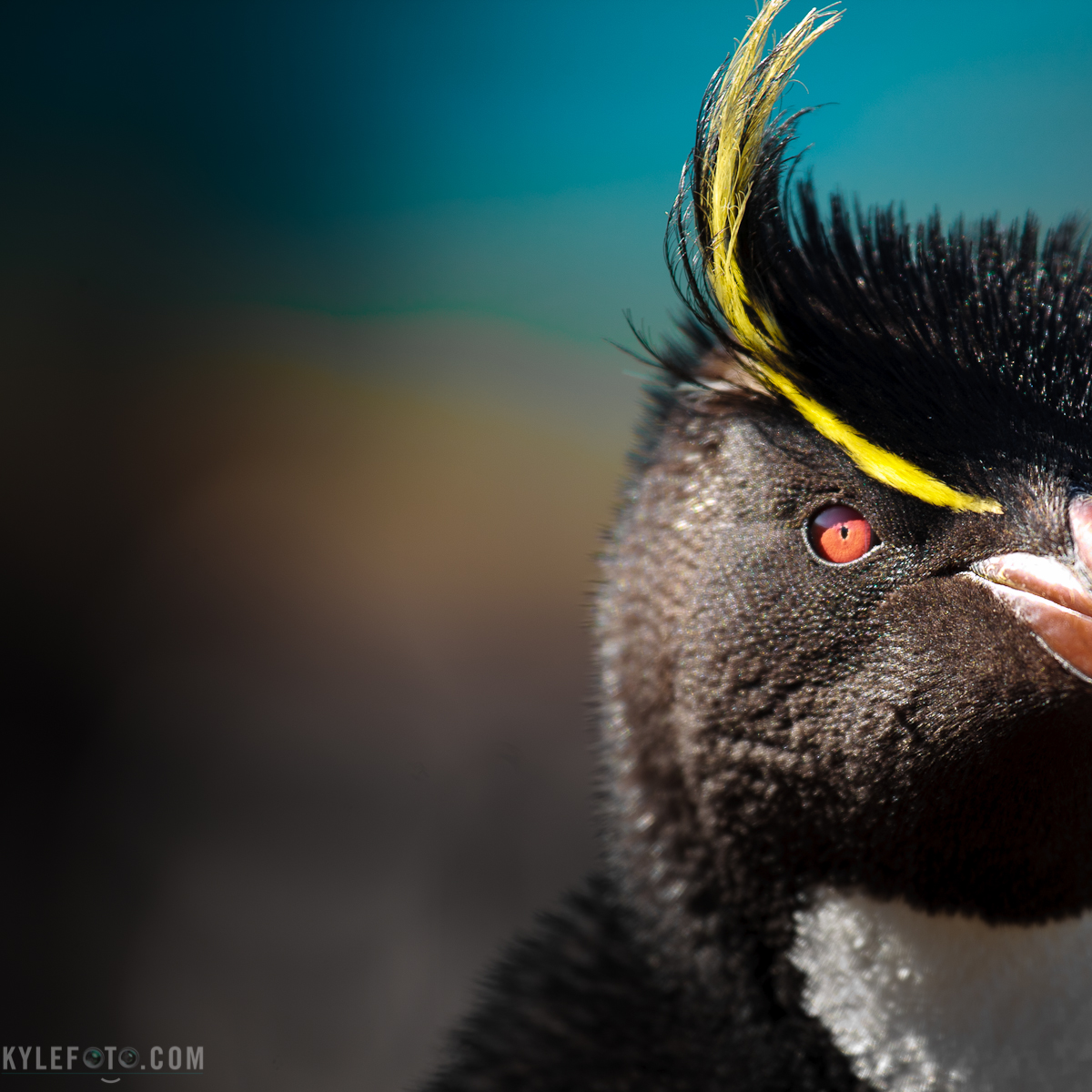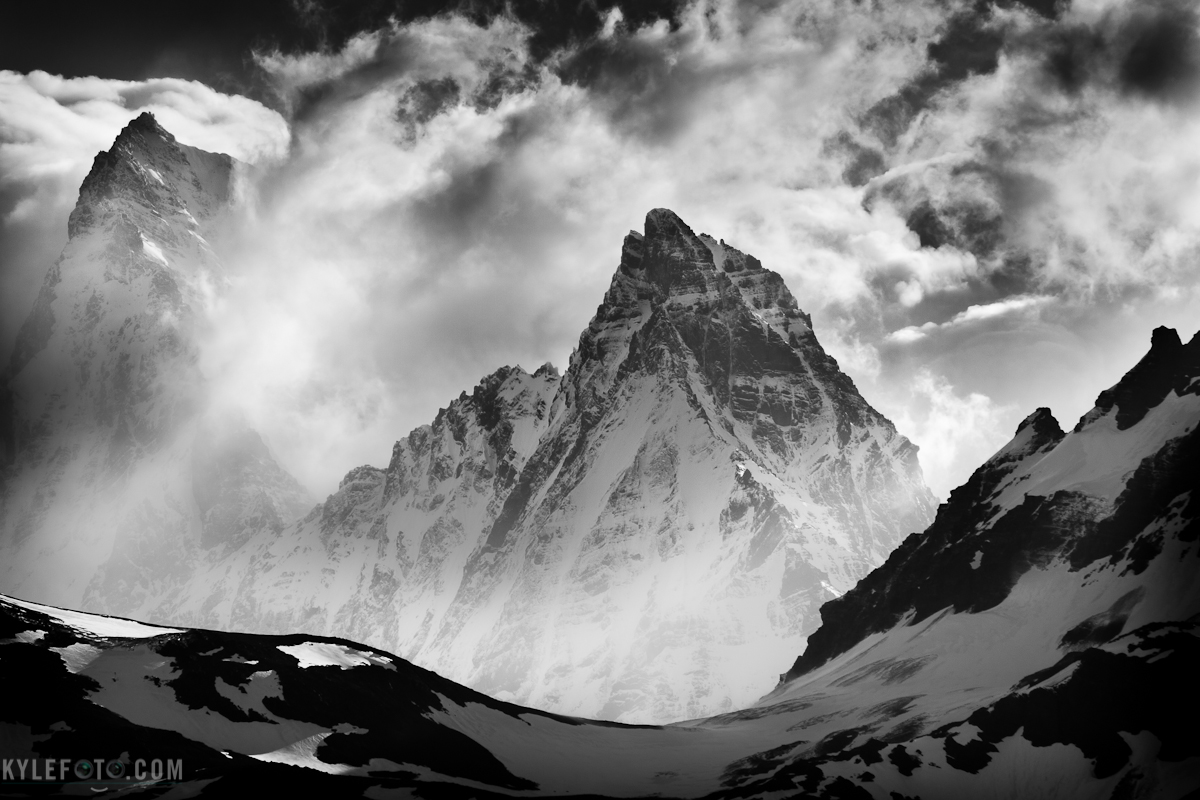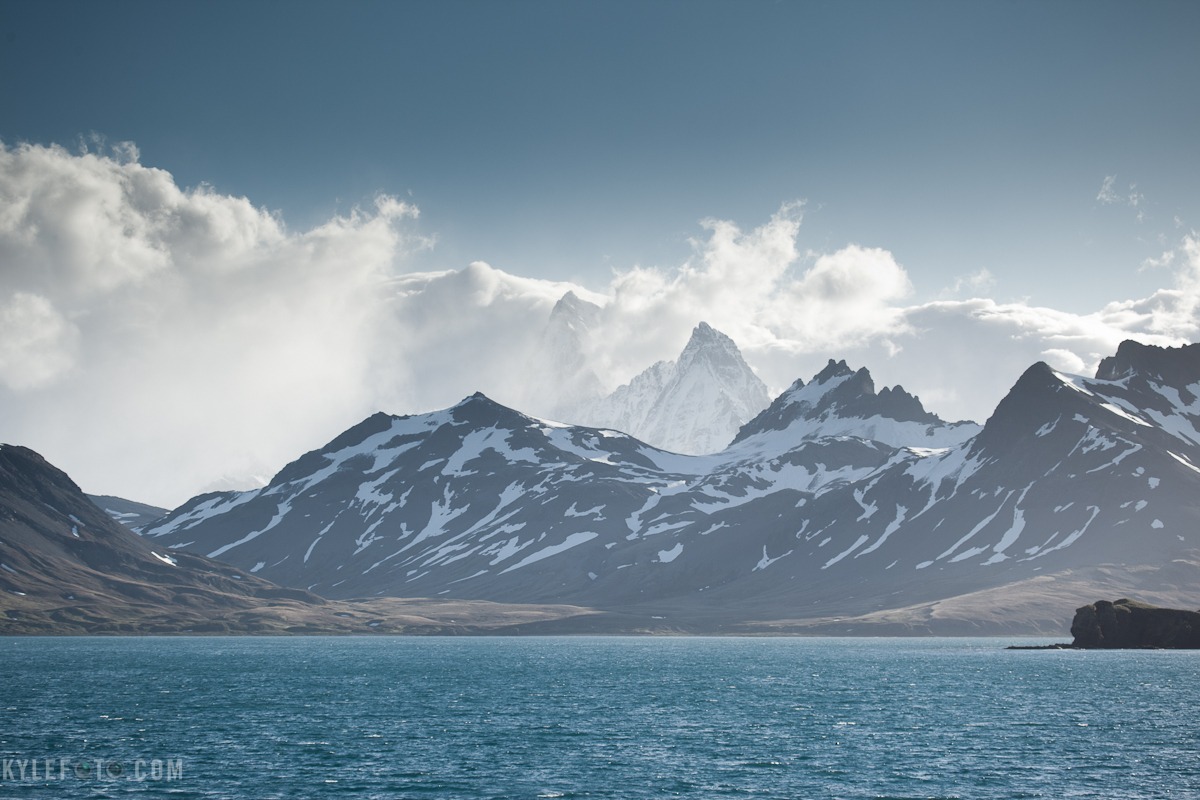On Safari in Africa The jackal is a spritely figure in the Masai Mara of Kenya. Trotting along the game trail this guy was fortunate enough to come across some scraps. Paying little attention to us he kept working away at his prize of the day. Jackals are primarily active at dawn and dusk, a lot like most of the animals we like to see in Africa. Not only is the light fantastic when the sun is close to the horizon, we get the double effect of all the wildlife activity. This is why on safari one often has their down time during mid day. I don’t think one would ever have to be afraid of a jackal in any circumstance as they tend to feed on anything much smaller than them including small reptiles, birds and mammals.
Click for Larger image
Photographic details: I wanted an interesting shot with a lot of the usual things a photographer is interested in, waiting for him to open his eyes, making sure his face wasn’t in shadow. This little expression he gave was somewhat sinister, even though it’s a brief moment taken while he was putting a lot of effort of gnawing the flesh off the bone.
For this portrait I wanted to reach back into my darkroom days and process this like a black and white negative. Spending hours dodging and burning in the lab I always felt such a connection with my photos. Dodging and burning is the process of selectively darkening and brightening certain areas of the image, it’s a practice that has been used in necessity since the dawn of film. Taking a photo is one thing, but preparing a print is another. By brightening my subject I bring more focus to him, and allow him to pop out of the uniform background instead of blending in.
This was taken on my photographic Safari this year, I have two more next year find out more at: http://www.kylefoto.com/category/workshops/


